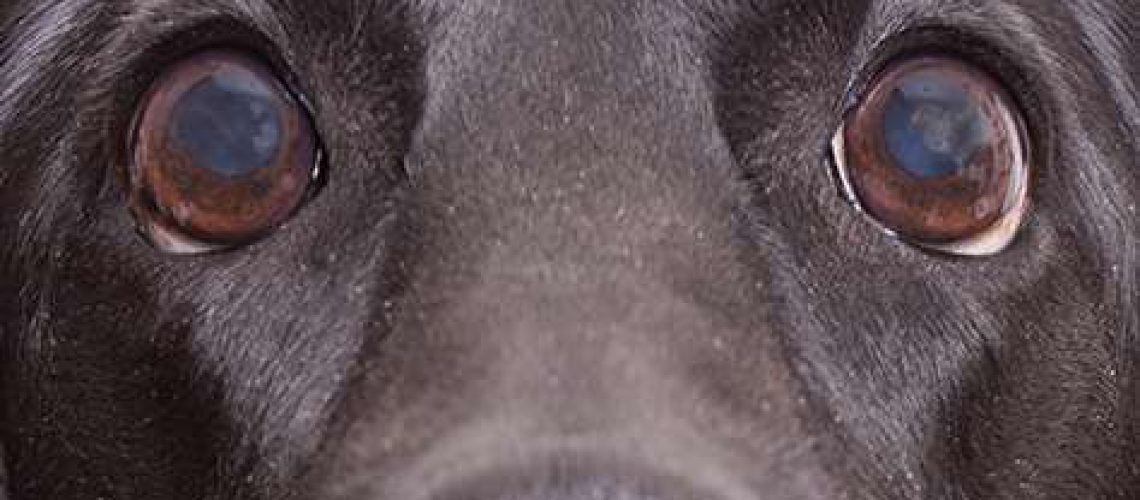Key Takeaways:
- Cloudy eyes in dogs can be a sign of various underlying health issues.
- Common causes of cloudy eyes in dogs include cataracts, glaucoma, corneal ulcers, and dry eye syndrome.
- Regular veterinary check-ups are crucial to diagnose and treat cloudy eyes early on.
- Treatment options for cloudy eyes in dogs may include medications, surgery, or specialized eye drops.
- Preventing eye injuries and maintaining good overall health can help reduce the risk of cloudy eyes in dogs.
Do you ever look into your furry friend's eyes and wonder what they're thinking? Dogs have a unique way of communicating with us, but sometimes their eyes can tell us even more than their wagging tails. Cloudy eyes in dogs is a common condition that can have various causes, and understanding this topic is essential for any dog owner. By delving into the world of cloudy eyes, you'll not only gain insights into your pup's health but also learn how to provide them with the best possible care. So let's explore this fascinating subject together and unlock the secrets behind those misty canine gazes.
What are cloudy eyes in dogs and why do they happen?
Cloudy eyes in dogs refer to a condition where the normally clear and transparent part of the eye, called the cornea, becomes hazy or opaque. This can affect one or both eyes. Cloudy eyes can occur due to various reasons, including age-related changes, injury, infection, or underlying health issues.
As dogs age, their eyes may become cloudy due to a natural process called nuclear sclerosis. This is a normal change that happens as the lens inside the eye thickens over time. However, if the cloudiness appears suddenly or is accompanied by other symptoms, it could be a sign of a more serious problem such as cataracts, glaucoma, or inflammation.
How can you tell if your dog has cloudy eyes? Are there any other symptoms to watch out for?
If your dog has cloudy eyes, you may notice a haze or fog-like appearance in their eye(s). The degree of cloudiness can vary from mild to severe. Other symptoms that may accompany cloudy eyes include redness, excessive tearing or discharge from the eye(s), squinting or blinking more than usual, and changes in behavior such as rubbing at the eyes or avoiding bright light.
It's important to pay attention to these symptoms and consult a veterinarian if you notice any changes in your dog's eye health. The vet will be able to examine your dog's eyes thoroughly and determine the underlying cause of the cloudiness.
Could cloudy eyes in dogs indicate a serious health problem? If so, what are some common conditions associated with this symptom?
Cloudy eyes in dogs can sometimes indicate a serious health problem that requires medical attention. While nuclear sclerosis (age-related changes) is generally harmless and does not require treatment, other conditions associated with cloudy eyes can be more concerning.
Some common conditions that may cause cloudy eyes in dogs include:
Cataracts:
Cataracts are a condition where the lens inside the eye becomes cloudy, leading to vision impairment. Cataracts can develop due to aging, genetics, diabetes, or certain medications. In severe cases, surgery may be needed to remove the cataract and restore vision.
Glaucoma:
Glaucoma is a condition characterized by increased pressure within the eye. It can cause cloudiness, redness, pain, and even blindness if left untreated. Medications or surgery may be required to manage glaucoma and prevent further damage.
Are certain dog breeds more prone to developing cloudy eyes? If yes, which breeds should owners be cautious with?
While any dog can develop cloudy eyes, certain breeds are more prone to specific eye conditions that can lead to cloudiness. Owners of these breeds should be particularly cautious about monitoring their dog's eye health and seeking veterinary care if necessary.
Some dog breeds that have an increased risk of developing cloudy eyes or related eye conditions include:
- Bulldogs
- Poodles
- Cocker Spaniels
- Siberian Huskies
- Pugs
Can treatment or reversal options help with cloudy eyes in dogs? What are some recommended interventions by vets?
The treatment options for cloudy eyes in dogs depend on the underlying cause of the cloudiness. In some cases, such as nuclear sclerosis (age-related changes), no treatment is necessary as it does not significantly affect a dog's vision. However, for other conditions that cause cloudiness and vision impairment, interventions may be recommended by veterinarians.
Some common treatments or interventions for cloudy eyes in dogs include:
Surgery:
If cataracts are present and causing significant vision impairment, surgery may be recommended to remove the cloudy lens and replace it with an artificial lens.
Medication:
In cases of inflammation or infection causing cloudiness, veterinarians may prescribe medications such as eye drops or ointments to reduce inflammation and clear up the infection.
How can dog owners prevent or minimize the risk of their pets developing cloudy eyes? Any specific measures for safeguarding eye health?
While some causes of cloudy eyes in dogs cannot be prevented, there are steps dog owners can take to minimize the risk and promote overall eye health in their pets.
Here are some tips for preventing or reducing the chances of dogs developing cloudy eyes:
- Regular veterinary check-ups: Schedule regular visits to the vet to monitor your dog's overall health, including their eyes. Early detection of any issues can lead to prompt treatment.
- Cleanliness: Keep your dog's eyes clean by gently wiping away any discharge or debris that may accumulate around the eye area. Use a damp cloth or specialized pet wipes recommended by your vet.
- Nutrition: Feed your dog a balanced diet that includes essential nutrients for eye health, such as omega-3 fatty acids. Consult with your veterinarian for appropriate dietary recommendations.
- Protection from injury: Take precautions to protect your dog's eyes from potential injuries during activities such as playing fetch or walking in areas with sharp objects. Consider using protective eyewear designed for dogs if necessary.
In conclusion, cloudy eyes in dogs can be caused by various factors such as cataracts or infections. It is important for dog owners to monitor their pet's eye health and seek veterinary care if necessary to ensure their furry friends stay happy and healthy.
What does it mean when a dog's eyes are cloudy?
A foggy, pale white layer covering the eye is an initial sign that a dog is experiencing vision loss. Nevertheless, cloudy eyes do not always indicate that a pet is going blind. However, if the cloudiness is caused by cataracts, a dog with cataracts will most likely lose its vision completely once the lens is completely covered.
Do all old dogs get cloudy eyes?
Cloudy eyes are a common occurrence in older pets, and unfortunately, they are often not given much attention during their check-ups. So, what exactly is happening? In most cases, what you are observing is a condition called 'senile nuclear sclerosis' that affects the majority of pets.
Do cloudy eyes go away?
If you experience persistent cloudy vision for more than a couple of days, it could indicate an underlying health issue. Conditions such as cataracts or glaucoma can cause cloudy vision that doesn't resolve on its own. If your vision doesn't improve or gets worse after a few days, it is important to seek medical attention right away.
What causes a haze over your eyes?
Cloudy vision in one or both eyes can be caused by various factors such as eye irritation, infection, or floaters. Another common cause of cloudy vision is cataracts, which occur with age and can be addressed through minor surgical procedures. (Date: May 4, 2023)
At what age do dogs eyes become cloudy?
Cataracts and lenticular sclerosis are two frequently observed eye issues in dogs that are older than nine years. It is estimated that around 50% of dogs over the age of nine have lenticular sclerosis or cataracts, and this prevalence increases to 100% in dogs over the age of thirteen.
How much does it cost to fix a dog's cloudy eye?
Cataracts in dogs result in cloudy eyes, leading to impaired vision and potential blindness. To restore your dog's vision, cataract surgery is available at a cost ranging from $2,700 to $4,000. The total cost may vary depending on the severity of the cataracts and other factors.

















